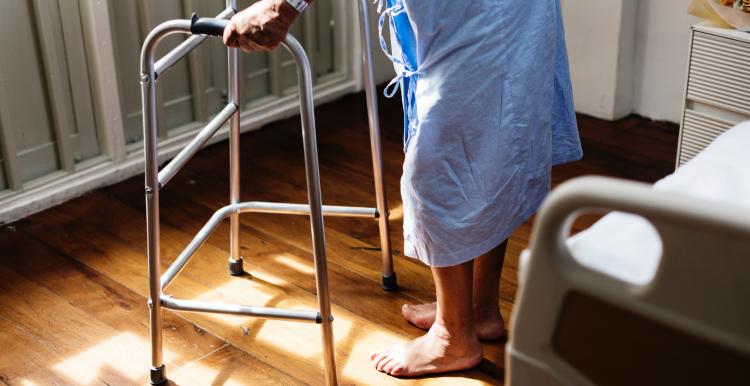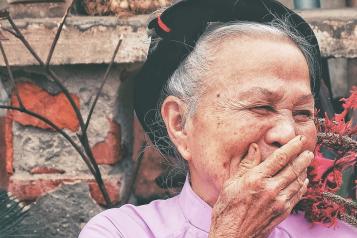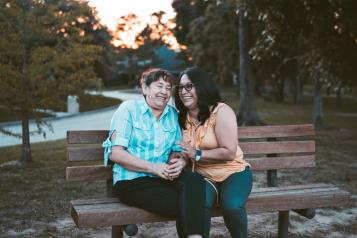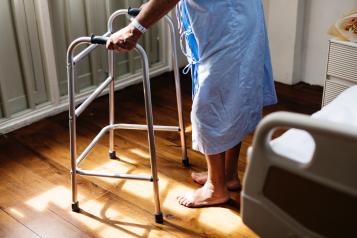How are Lambeth care homes coping during the pandemic?

An introduction to Lambeth care homes and what they have dealt with recently, with Michelle Homer, Commissioning Development Officer – Older Adults, Lambeth Council and SE London CCG Integrated Commissioning
How the NHS is supporting care homes, with Dr Tania Kalsi, Consultant Geriatrician, Guy’s and St Thomas’ and Dr Jayesh Patel, local GP and SELDOC
Life in lockdown at Limetree and Windmill Lodge Lambeth care homes with Tanya Coles, Regional Quality & Development Manager at Excelcare
Q&A
Attendants had a chance to ask questions at the end. If you have additional questions that aren't answered below, feel free to get in touch with Healthwatch Lambeth.
Q: What's the current situation for family members talking to people in care homes?
A: The care homes have been making phone calls and helping residents make phone calls, asking families how often they want calls with updates, and providing ipads as an option so that residents could speak directly to their loved ones. The consultant team has also been very accessible "if anyone wants to chat with us, they can give us a call", and they give weekly updates for families. The care homes have been making sure to ask families what they need right now, more than anything.
Q: What's the visiting policy currently like for care homes? How are the visiting politics currently set? Is it a blanket approach across the borough? Or is it up to individual homes?
A: We know that families are desperate to see their loved ones, but we need to balance that with the safety of the staff and the residents. From a commissioning point, Lambeth
can't introduce a blanket policy, as the care homes are individual homes run by private organisations. It's up to them how they want to ensure safety in the home. At the moment it seems most family engagement is virtual, but in some homes they are letting families come into the car park so that they can wave to their relatives through the window. But it is really up to the individual homes.
Some care homes have had exceptional circumstances where people have been able to come into the home, and in the future it will be gradually extended out, to visiting in garden areas, but whilst also ensuring everyone's safety.
It's a difficult decision to make, and as testing is showing that a lot of asymptomatic people can be carriers of the virus, it's a really tough choice between heart wrenching decisions of keeping loved ones away from each other, and ensuring everyone's safety.
Q: Do you as a team have a feel for where the initial infections may have come from?
A: The virus would have been carried in by people coming in, not the residents. It could be relatives, medical staff, care staff, anyone who came in from outside. Care homes have a very multidisciplinary team, so it is difficult to answer with any accuracy. The asymptomatic carriage could be the most problematic par, and that's why a cautious approach moving forward is crucial.
Q: There are residents who might not have family support. Have there been efforts to link them to wider community support?
A: We had been doing a lot of things with the community already, before the lockdown. So a lot of virtual sessions carried on, and so residents had the opportunity to see a face or hear a voice that was familiar. Some of these initiatives have been enhanced in some ways.
Claire from Disability Advice Service Lambeth (DASL) mentioned that their team are offering support for residents without any family or friends links - who might not have anyone to talk to during this time.
Q: How do the homes manage with staff shortage during this time?
A: It was very difficult, but our contingency plan looked at what other skills people had, if staff could do extra shifts, so we did what we had to do. We also partnered with an agency for extra staff, which was quite consistent and good support. We did not really have too much of a negative impact on staff shortage in the early days. We all just came together to work trough this difficult time. That's the case for majority of care homes, we did our best to keep good staff, so people took on extra shifts, we had very little use of agency staff as permanent staff wanted to stay and support their residents. It's been great, the majority of homes have coped quite well.
Q: How do you plan to take things forward now?
The redesign of Lambeth care home services was already happening by coincidence at the same time as the lockdown, so the pandemic has actually accelerated the take up of this. There's more scrutiny of what works, what didn't work and efforts to come up with a tangible service moving forward. We need to formalize those changes, but if we keep those changes w see a positive design going forward.
What we learned in Covid-19 was that normally when we design services, it is top-down, but what we saw in the pandemic response was more bottom up. We found the issues and worked from there, so that approach, designing the service around problems and needs, that's the biggest learning we took moving forward in how we design integrated services. We should be starting with the care home residents and practitioners' needs, instead of the services managers.
The commissioners also support this approach, as we are expecting to move forward and developed a multidisciplinary team that can better support care homes. The evidence won't just be taken from literature or case studies elsewhere, but rather how things work right here, now, and that's the best way. It will be less theoretical and more what we really understand and what the care homes take forward in terms of what they need and what they've learned.


